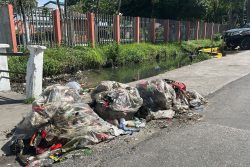The New York Times recently carried a fascinating account of behind-the-scenes manoeuvring in the dying hours of the Copenhagen Climate Change conference which was aimed at salvaging some type of accord since a binding agreement was no longer possible and even a political pact which had been the minimum outcome expected was itself out of reach.
With President Obama on the ground in Copenhagen and tensions with China over international monitoring of pollution cuts bubbling over, the two sides tried to hammer out some understanding that would avert total collapse. Twice, according to the NYT, Premier Wen dispatched a low level functionary to meetings summoned by Mr Obama. Even after a one-on-one meeting between the two men on the final afternoon of the conference, it was the special Chinese representative on climate change negotiations, Mr Yu Qingtai who was deputed to sit in on a meeting of major leaders including Mr Obama. At one stage this prompted President Obama to tell his staffers “I don’t want to mess around with this anymore. I want to talk to Wen”. An evening meeting was then scheduled between the two while the White House arranged a separate caucus with the South African and Brazilian Presidents and the Indian Prime Minister.
According to the NYT, shortly before the scheduled meeting with President Wen, White House officials arrived at the venue to find the Chinese Premier already meeting with the Indian, Brazilian and South African leaders. Mr Obama was alerted and immediately rushed down to the venue and would eventually enquire from the doorway where the meeting of the quartet was taking place “Mr. Premier, are you ready to see me? Are you ready?” It was this meeting that led to the accord which was later presented to the major European nations for their qualified support and deliberation by the full conference.
This sequence demonstrates the ever increasing stature of Beijing and the ease with which it is dancing around Washington on the world stage. It also provides a broad hint as to how the standing of the UN has been diluted on crucial and complex issues like climate change and how in the future smaller groups of countries with China, India and Brazil in the mix will direct the show.
For Guyana and less influential countries, it means that the Green Room syndrome where deals at major international gatherings are struck in small, exclusive clubs and then presented to the floor is very much alive and will continue to work against us.
There is no doubt that the Copenhagen Accord has to be interpreted as the veneer that was carefully painted over failure. With no binding commitments and every major decision now put off until next year in Mexico, Guyana now has to evaluate how it navigates the tricky waters leading up to the next major round of talks and how it prepares to tap any funds that might soon become available.
There is no doubt that in the period leading up to Copenhagen, President Jagdeo and his Low Carbon Development Strategy team envisaged that the tide had turned in favour of heavily forested countries and that the climate summit would eventuate in a major financing agreement by the developed world for countries like Guyana.
This was not to be. China and India would not allow themselves to be bullied into constraining their economic growth to make up for the historic warming pollution by the developed world and President Obama clearly didn’t have the domestic political clearance to commit to deeper emission cuts. This impasse choked progress on several fronts. There is therefore no windfall on the horizon. While the financial commitment to ameliorate the effects of climate change on the most vulnerable developing countries has been hailed as one of the few tangible outcomes of the summit, how it will be divvied up among the developed countries is the key question. There is a firm commitment of US$30b for 2010 to 2012 but vaguer commitments for the pledged US$100b per annum by the year 2020. The initial US$30b is intended to support adaptation and mitigation in developing countries, particularly for the most vulnerable countries that could be undermined by climate change.
That money is therefore likely to go to developing countries that can immediately slash emissions or reduce deforestation – we don’t fall eminently into this category – and those on the cusp of devastating dislocation by climate – we also do not stack up in the upper percentiles here. The latter category would include the likes of Tuvalu, Nauru, the Maldives and other island states which face the immediate jeopardy of being swallowed up by the sea. As was evident in Copenhagen they were able to scream the loudest and there was no denying the jeopardy that they and the people living along the Bangladeshi delta face. Whether the US$30b would be employed to begin relocating populations completely from one land to another or to build better sea defences is unclear.
What is Guyana’s game plan? It mentions in the LCDS the danger of flooding and the need to rehabilitate the East Demerara Water Conservancy (EDWC). This, however, would have to be accompanied by a persuasive case that doesn’t exist at the moment. The 2005 Great Flood highlighted the need to properly manage the EDWC whose neglect over a long period made it a major contributory factor to the deluge that took over the lower East Coast. If it had been properly managed over the period the EDWC would not have been the threat that it has now become and would therefore not fall into the category of an extraordinary climate-related danger. That leaves the question of sea rise. While there have been sporadic sea defence collapses and overtopping this has not been a yearly phenomenon. A case for funding on the basis of overwhelmed sea defences would seem to be a longer-term issue dependent on the veracity of sea level rises and the longer-term financing available after the next three years.
While REDD+ – the underpinning of the LCDS – was significantly mentioned in the text of the Copenhagen Accord, the extravagant figures presented in the McKinsey Report for Guyana’s forests do not seem to be grounded in the international reality.
So aside from the Norwegian financing over five years and the World Bank’s Forest Carbon Partnership – both of which encompass weighty commitments by Guyana before disbursals – there is no other imminent tranche of financing.
The development needs of Guyana and its people cannot be met solely from these two initiatives in the near or medium term. This government needs to have other ideas even if within the constructs of the LCDS. This is now the challenge that faces President Jagdeo and his government.
One of the ways to keep the low carbon hope on the road is to make a real transition to cleaner and renewable energy. Can this government finally get the turbines of major hydro power really going even though there have been barren promises for many years. Can Guyana add significantly more to the national grid via biofuels? Can ethanol from sugar become a reality?
Copenhagen was another dismal failure on the road to finding an easy track to bring prosperity to Guyana. President Jagdeo now has around a year and a half to try to shape how Guyana can benefit from Copenhagen but more importantly to locate those benefits within a broader plan which is not mendicant in its nature and makes each and every Guyanese a productive citizen capable of growing the wealth of this country.









